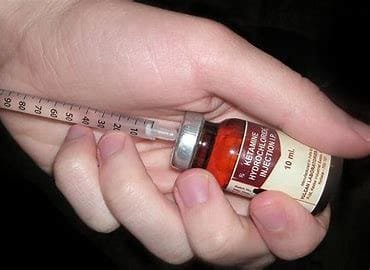Overview

Ketamine is a very versatile medicine found to have unique applications for both medical and therapeutic purposes. Early days as an anesthetic, ketamine has come a long way to give its name in psychiatric treatments for depression and other disorders. Formed and serving purposes in many ways, there is an overview of how ketamine is formed and used, its dosage, etc.
Formation and Chemical Structure
Ketamine is an arylcyclohexylamine, chemically formulated as C13H16ClNO. This is a chiral compound and administered clinically as a racemic mixture of the two enantiomers, R(-) ketamine and S(+) ketamine. The latter has greater anesthetic potential and is used in medical practice. Ketamine is a derivative of phencyclidine (PCP), a dissociative anesthetic, but its toxicity is lower and more frequently administered.
Mechanism of Action
Ketamine primarily acts through the N-methyl-D-aspartate (NMDA) receptors in the brain, which are also the mediators of pain perception, learning, and memory. The blockage action of ketamine on these receptors produces anesthesia, analgesia, and a dissociative state. Its rapid antidepressant effect has also been attributed to the blocking action on the NMDA receptors, though it is yet under study.
Uses of Ketamine
Anesthesia and Pain Management: The development of ketamine was first developed as an anesthetic drug, and to date it has been used for anesthetic purposes. What is unique about ketamine compared to other anesthetics is that it has no impact on the respiration system; hence, this makes its application safer on some risky patients. It is now administered at a low dosage for pain relief, such as in cases of severe traumas, severe burns, or acute injuries in others.
Ketamine has found great utility in the emergency environment for rapid onset of sedation and pain relief where other anesthetic agents might not be possible or available.
Treatment of Mental Conditions
Ketamine has found a lot of popularity for the treatment of major depressive disorder, treatment-resistant depression, and post-traumatic stress disorder in recent years. Low doses of ketamine infusion are shown to work rapidly, usually within a matter of hours, in patients seen in the clinic.
Ketamine is believed to create neuroplasticity, the brain’s ability to reorganize and therefore aid in the elimination of depression symptoms. It is particularly beneficial for a patient who has failed multiple attempts at traditional antidepressive treatments.
Other Potential Future Applications
Studies are still ongoing regarding the application of ketamine in chronic pain syndromes, the treatment of migraines, and suicidal tendencies. Its fast-acting effect provides relief where other treatments could not.
Dosage and administration
Anesthesia:
The dose for the induction of anesthesia is usually given intravenously at 1-2 mg/kg. The drug can also be given intramuscularly at a dose of 4–10 mg/kg. The dose, however, depends on the patient’s age, weight, and the medical condition of the patient. The effects are usually induced within minutes and last for approximately 5-10 minutes after a single dose.
Pain Management:
Ketamine, used in analgesia, would have much smaller doses. Infusion used for low-dose ketamine infusion for pain is anywhere from 0.1 to 0.5 mg/kg/hr. Such an infusion is reported to offer analgesia without the full dissociative effects and can be applied to acute and chronic pain cases.
Treatments for Depression

In mental health settings, even lower doses are used, usually 0.5 mg/kg, intravenously infused for 40-60 minutes. Such treatment usually takes place in a clinical setting, under tight monitoring, and is repeated several times for weeks. Thus far, no set protocol has been followed since more research is required to fine-tune the parameters of treatment.
Nasal and oral forms:
Another formulation that the FDA approved is ketamine, a S-ketamine nasal spray. This is administered in conjunction with an oral antidepressant medication and is given with the support of a controlled clinical setting in a medical facility.
Safety Profile, Adverse Effects, and Risks
Common Adverse Effects:
Psychological Effects: Ketamine elicits vivid hallucinations and confuses a person, as well as altered perceptions. Patients, for this reason, experience what is labeled a “dissociative” state, whereby they feel separated from their body.
Nausea and vomiting: These are the two most frequent side effects of administration with ketamine, most specifically when used as an anesthetic.
Elevated Blood Pressure: Administering ketamine increases a person’s blood pressure, so it is generally avoided in persons suffering from uncontrolled high blood pressure.
Long-term Risks:
Urinary and bladder issues: Chronic or episodic ketamine has been implicated in causing irritation of the bladder and cystitis in the form of ulcers, commonly known as “ketamine bladder.”
Neuropsychological effects: Exposure to high doses or chronic ketamine exposure will impair the cognitive functions through reduced memory and attention.
Given that ketamine has hallucinogenic potential for abuse and dependence, it is classified as a Schedule III controlled substance in the United States. In healthcare facilities, there are set protocols and guidelines that have been put into place to limit the risk of such an occurrence.
Contraindications and Precautions
Ketamine should be avoided in any patient with the following condition or history:
Uncontrolled hypertension, History of schizophrenia or psychosis, Existing hypersensitivity reaction to ketamine
It must be used with care in the patient with cardiovascular disease, liver dysfunction, and substance abuse risk. Due to its potential for severe psychological impact, the administration of ketamine for mental illnesses is typically performed under the watch of a health professional experienced in its use.
Key Takeaways, Dosage, and Setting:
This should always be delivered in a medical setting with professionals. This drug use for anesthesia or depression treatment requires strict monitoring to ensure safety and potential side effects.
Psychiatric disorders and counseling:
For individuals who receive ketamine as a supplement to mental health therapy, combining it with psychotherapy or counseling yields great benefits. Ketamine-assisted therapy is an emerging practice where therapists guide patients through their experiences in order to better process emotions and memories.
Research Needed
Currently, it is being researched for the treatment of other diseases. Future investigations will perhaps elicit better optimal dosing, long-term side effects, and suitability in patients.
Conclusion

Ketamine is one of the strong and versatile drugs that have wide application as opposed to its development as an anesthetic. Its benefit in pain treatment and psychiatric therapy underscores its unmatched advantage over conventional treatments. However, due to its potential side effects and risks of abuse, specific contraindications exist, and thus it must be used with caution and under professional supervision. Further research in its therapeutic mechanisms may increase the use of ketamine in medical treatment in the future.



